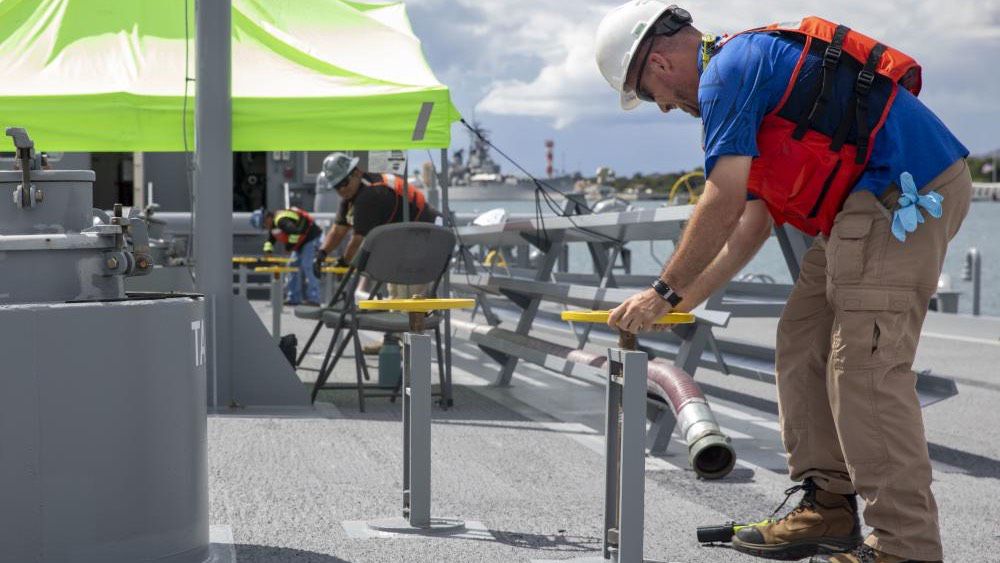PEARL HARBOR, Hawaii — The Navy submitted its plan for defueling and closing the Red Hill Underground Fuel Storage Facility to the Hawaii Department of Health on Tuesday.
The plan submitted on Tuesday outlines defueling the facility, which requires emptying 20 tanks, four surge tanks and associated piping, and permanently closing the facility.
The Navy intends to ask the Hawaii Department of Health to approve closing the facility and repurposing the tanks for a non-fuel use.
“We are not going to pursue any beneficial reuse option that would contain potential contaminants,” said Assistant Secretary of the Navy Meredith Berger during a news conference.
The Navy will seek input for beneficial non-fuel reuse options from the Department of Health, the public and other stakeholders. After collecting options, the Navy will make a final determination for non-fuel reuse, which will be submitted to the Department of Health for review.
Rear Admiral Stephen Barnett said at the news conference that future uses for Red Hill include storage, producing hydroelectric power or even turning it into a movie set.
In considering how to close the facility permanently, the Navy analyzed simply closing the facility, closing the facility and using the tanks for a non-fuel purpose, closing the facility and filling the tanks with an inert material, and removing the tank’s steel liners and filling the tanks with an inert material. A third-party analysis of these four alternatives is being written and will be provided to the Department of Health in Dec. 2022.
The plan also addresses that the pipelines must be secure before defueling the tanks; the pipelines are currently being drained in order to conduct necessary repairs and modifications. It includes the order for draining the tanks and pipelines, removing the sludge or waste materials that have accumulated in the tanks and pipes, a site assessment in connection with the facility’s permanent closure and a schedule for cleaning each tank.
The Joint Task Force-Red Hill expects to complete defueling by the end of June 2024. The plan says six of the 20 tanks are already empty, which could speed up the defueling schedule. After the defueling is completed, it will take another three years to close the facility.
Michelle Broder Van Dyke covers the Hawaiian Islands for Spectrum News Hawaii.



